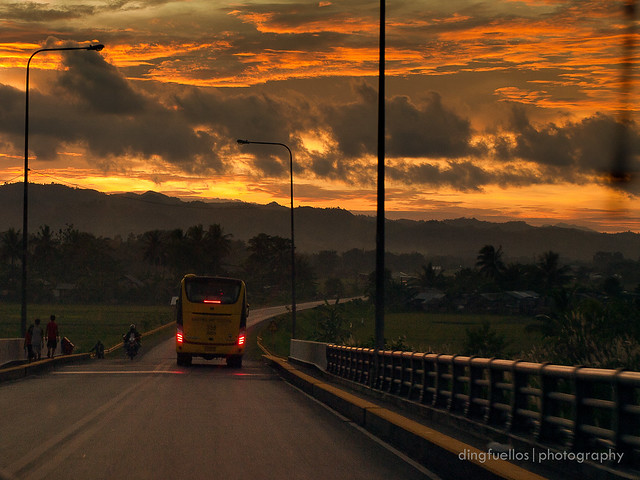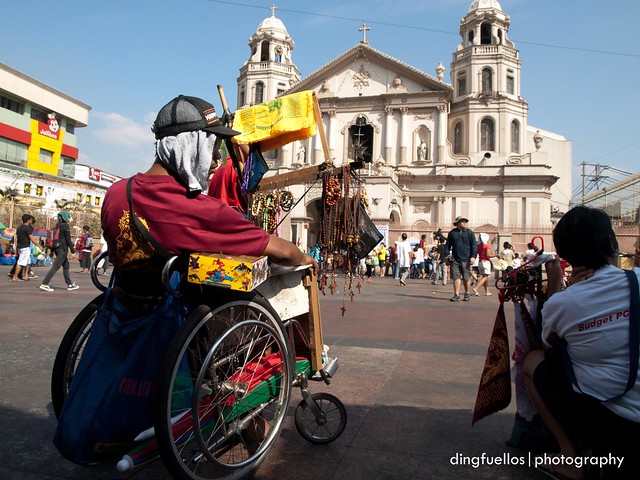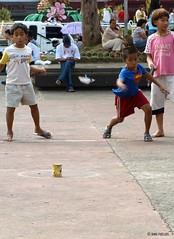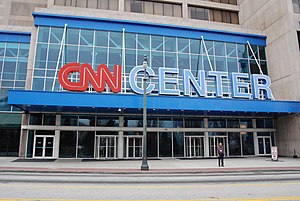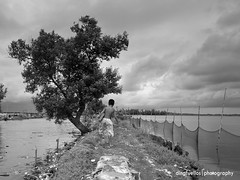Lately, I saw a link on the stages of photography. Looking at this graphical representation, I thought my photography really sucks! I am not even on a maturing stage and I am regressing. I must admit, I ate my own words about HDR (uhmmm...not particularly those who are doing HDR).
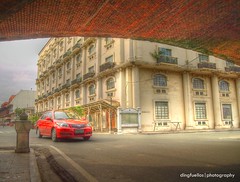
But then, sometimes, I get frustrated with getting the appropriate exposure for both the foreground and the background in my landscape photography. This is true when you see an amazing view and can only live with the available spot or location. It was either the sky is appropriately exposed and the foreground is underexposed or the foreground is just right but the sky is overexposed. I thought, in times like this, or when the sun is not at your back, the only solution is HDR. This also applies to the so-called "tunnel shots" like this. you cannot make a good exposure of the "tunnel" (which in this case is an arc bridgeway in Intramuros, Manila.
 I tried this during my trip to Chocolate Hills in Bohol. There is no way I could face a sunrise and get a good exposure of the Chocolate Hills, and it was the only time I would get to photograph it, since I have a workshop after breakfast. Since I had no tripod during that time, I took a single RAW shot, and made three exposures in Olympus Master (the bundle post processing software of my Olympus E-510) -- these exposures are -1, 0, and +1. Then I had my Photomatix 3.2 do the trick, and edited the colors and white balance in Lightroom 2.0.
I tried this during my trip to Chocolate Hills in Bohol. There is no way I could face a sunrise and get a good exposure of the Chocolate Hills, and it was the only time I would get to photograph it, since I have a workshop after breakfast. Since I had no tripod during that time, I took a single RAW shot, and made three exposures in Olympus Master (the bundle post processing software of my Olympus E-510) -- these exposures are -1, 0, and +1. Then I had my Photomatix 3.2 do the trick, and edited the colors and white balance in Lightroom 2.0. So am I into HDR as a signature photography post processing? The answer is both YES and NO.
YES, because I would love to use HDR only on my landscape and architectural shots. I would still like to create HDR photos like that of Tony.
NO, because I tried using it for street photography and still photography. Sure, the photos look nice, but then HDR is not appropriate for them. If ever I would go into portraits using HDR, I should be as good as Chito Francisco, where most of his HDR post processing for portraits produce outstanding results.
In other words, HDR has its own purposes, and has some limitations, too. HDR is good for landscape, and architectural shots, where you want to bring out the details and exphasize the architectural design elements like Tony's photos. Also, if you want to create a surreal photo like the movie "The Lovely Bones", then you are on the go. I would say, forget it when you are dealing with still photography. Yes, you may use it to emphasize the "oldness" of the subject like dilapidated trucks and so on. But sometimes, leaving them as they are makes it more realistic.
In other words, HDR is not bad per se. HDR is nice to learn. In fact it is a must for non-pro like me to learn HDR to learn more about shadow and light and exposure, which is the crux of photography. But making it as your signature photography genre would be limiting you to explore the vast possibilities in photography.
HDR relies heavily on skill on post processing technique. If you do not have basic photography principles on white balance, lighting and exposure control, and colors, then HDR is not for you either. HDR photography also relies heavily on technology. Too much reliance on software like Photomatix, Lightroom and Photoshop, also stunts your photographic learning curve. Not everything can be solved by HDR. Not every photo must be "HDR'd". HDR has a purpose, and you need to discover that yourself. On this last note, I would say that HDR offers many possibilities too and I might try HDR for portraits, like that of Chito Francisco.
Click here to see my HDR photos.

